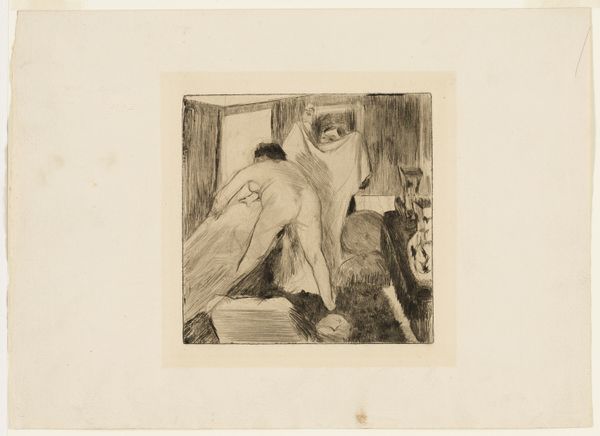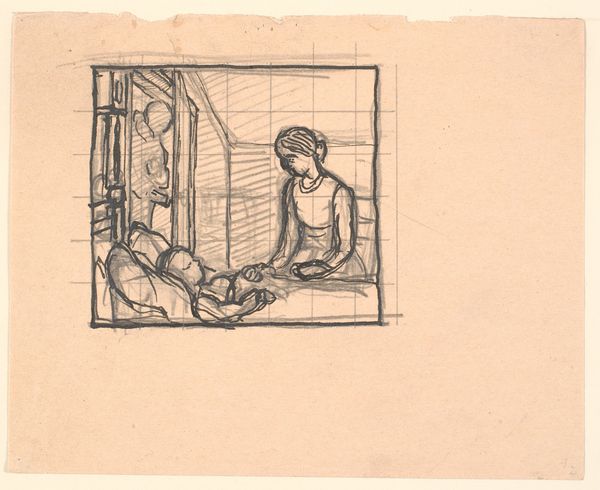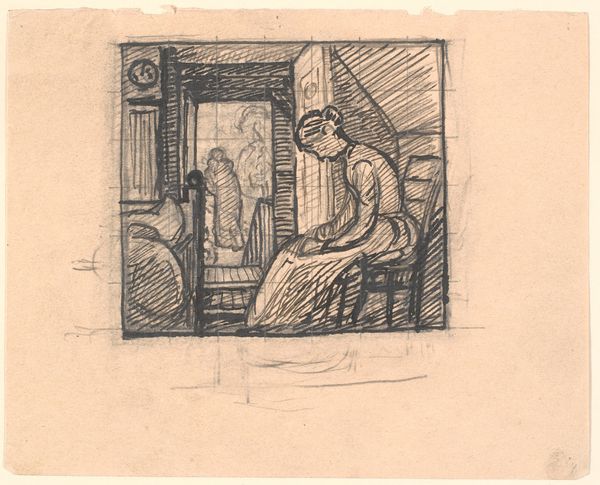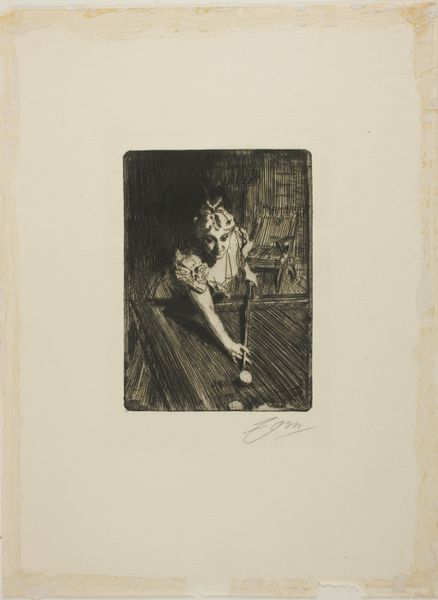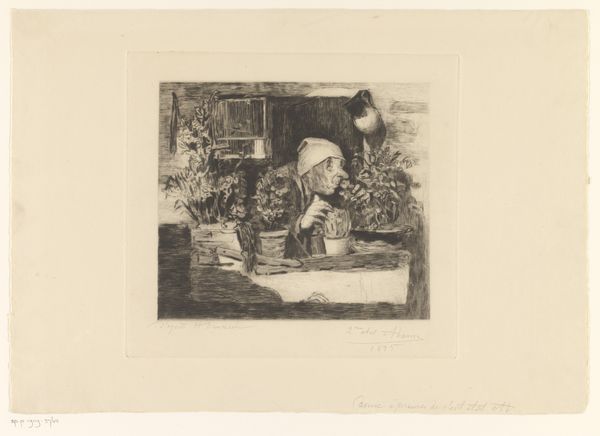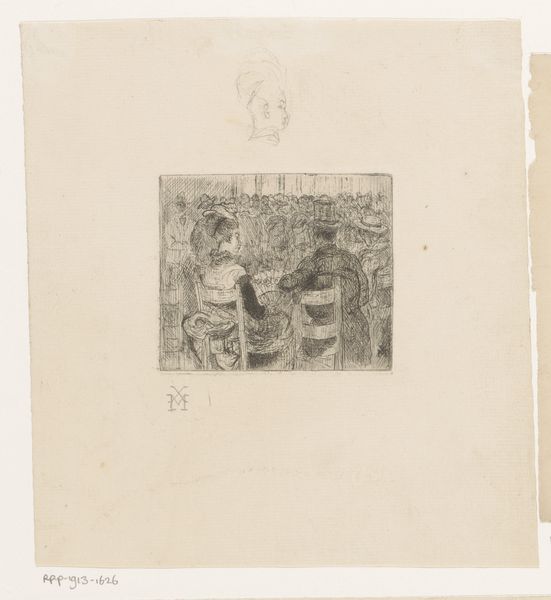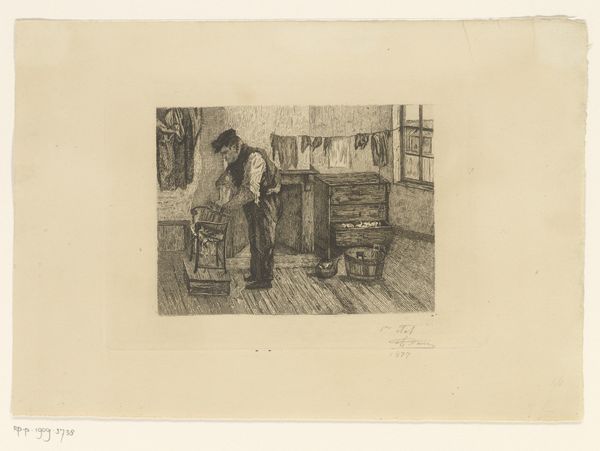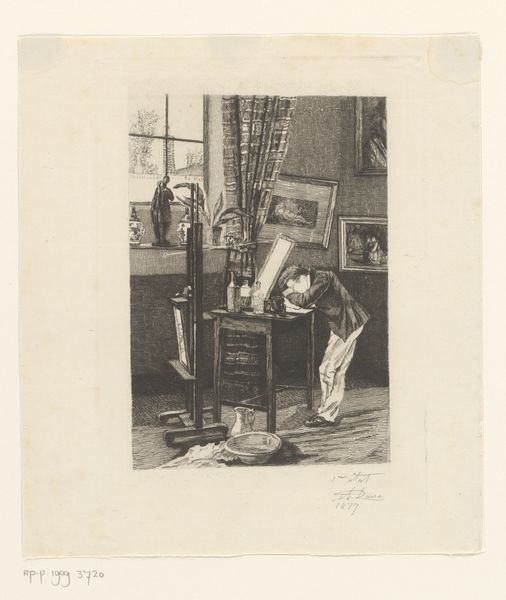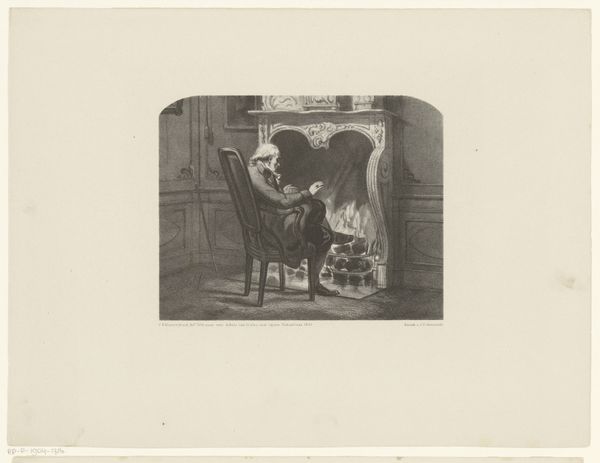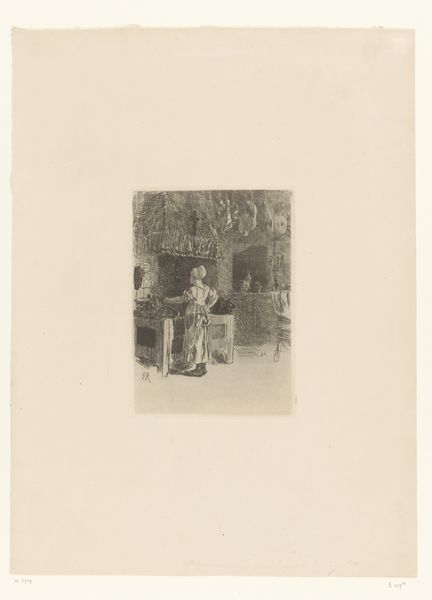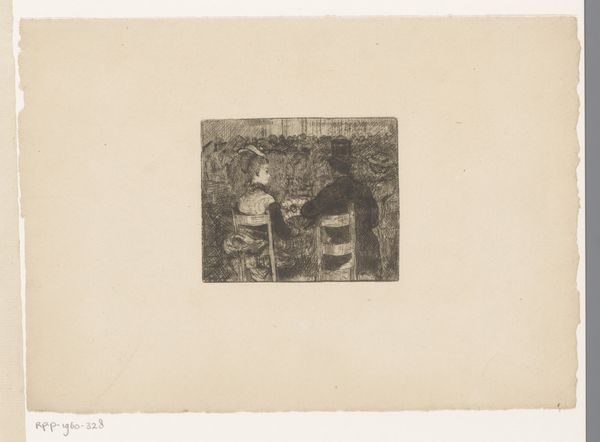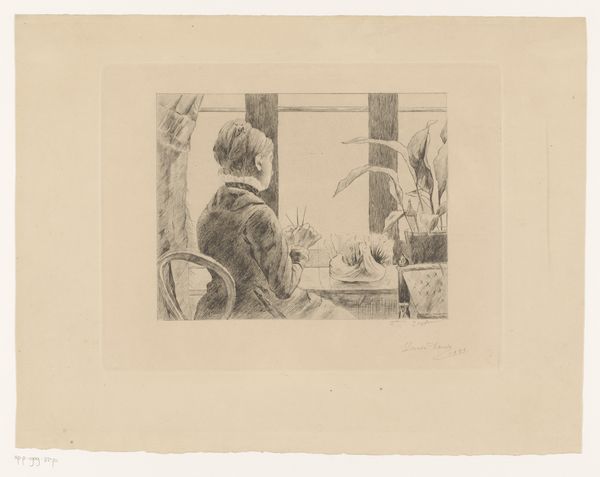
Copyright: Public Domain
Editor: Here we have Ernst Ludwig Kirchner's 1934 etching, "Selbstbildnis im Atelier" or "Self-Portrait in the Studio," currently housed in the Städel Museum. It has a kind of haunted feel to it, with these very angular lines, and I’m curious how that relates to its history. How do you interpret this work? Curator: The haunted feel, as you say, is key. Consider the historical context: 1934. Kirchner was labeled a "degenerate artist" by the Nazis just a few years later. This etching, beyond a simple self-portrait, reflects a sense of unease and social isolation that permeated the lives of many artists during that time. Do you see how the cat at the window almost acts as an ominous observer? Editor: Yes, now that you mention it, the cat definitely adds to that sense of foreboding. The perspective feels claustrophobic, too. Was Kirchner deliberately commenting on the art world and the sociopolitical environment of the time through this piece? Curator: Precisely. The setting itself - the studio, traditionally a space of creativity and freedom - becomes a stage for confinement and anxiety. It's Kirchner using his art to confront and comment on the increasing pressures and threats against artists and artistic expression in Germany. How do you think this kind of personal-political statement impacted its reception, both then and now? Editor: I can imagine this etching stirred mixed feelings, potentially admired for its artistic boldness but also risky given the climate. Now, it seems like a poignant record of that era and its effects on creative individuals. Thank you. Curator: And thanks to you, by looking closer, we can perhaps see the personal as incredibly political, and a so-called simple portrait speaking volumes about an era of cultural crisis.
Comments
No comments
Be the first to comment and join the conversation on the ultimate creative platform.
